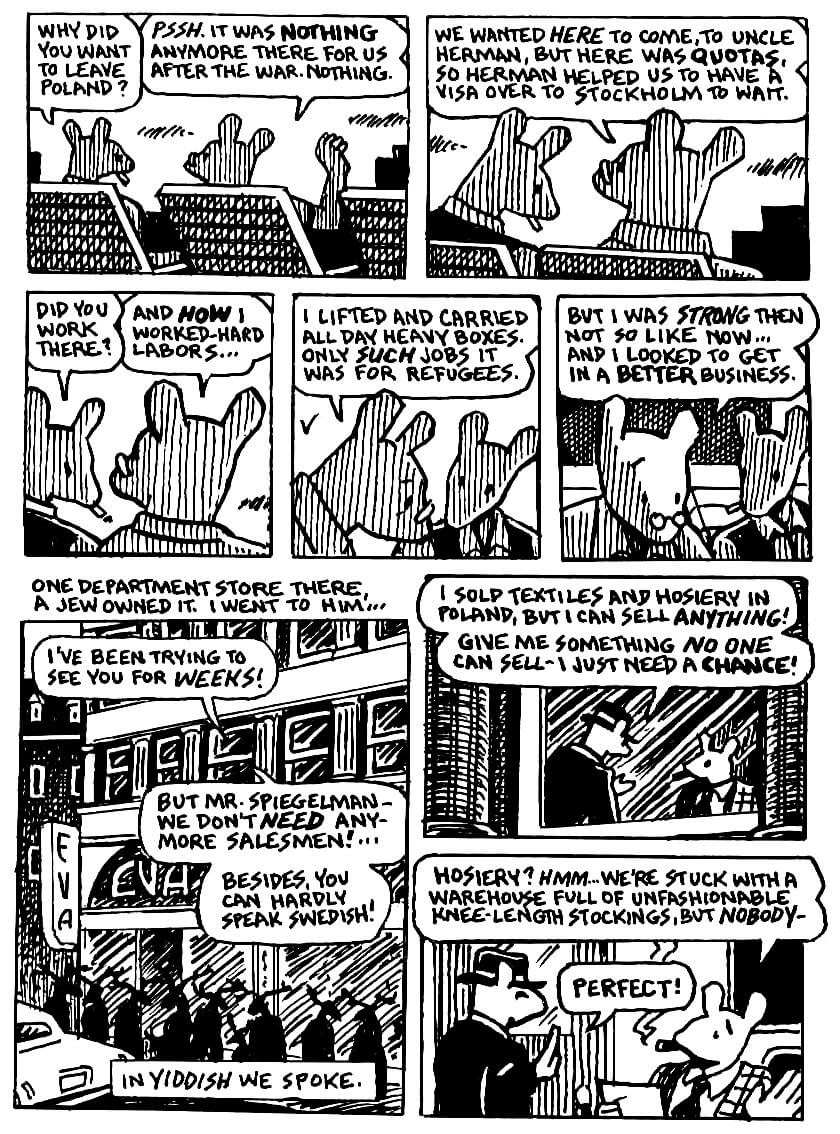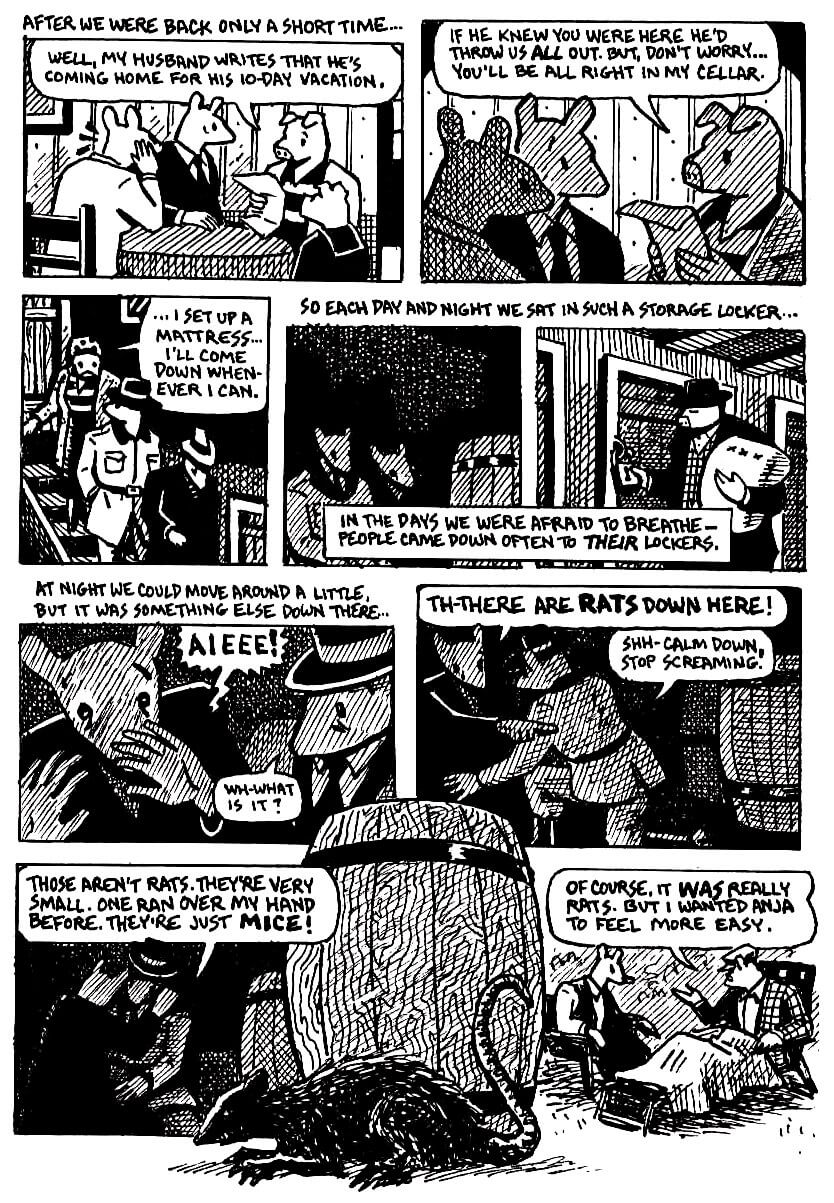

Vladek comments that despite the immense danger of being hanged, even when he was caught, he managed to wriggle out, pretending to have a grocery store (Spiegelman 85).

Later, having already lived in the ghetto with his wife, Vladek began to sell various items and stealthily delivering sugar to shops. However, Vladek notes that he does not know what became of them, thereby hinting that he had enough strength to work and survive even under the Germans’ yoke (Spiegelman 56). For example, describing his life as a prisoner-worker, the father notes that some prisoners could not bear the hard work and returned to the cold camp to starve. However, even more essential breaks in the narrative are those that directly or indirectly emphasize Vladek’s ability to survive under challenging conditions. For a person who has gone through tremendous hardships, waste of food or a frivolous attitude towards things is unacceptable. Besides, in his everyday comments, a reader can see the traits of a Holocaust survivor, for example, in an uncompromising attitude towards money, which saved his life many times, or leftover food (Merino). Often, Vladek is quite strict both to his son and those around him. A man can be distracted, for example, by fallen ash, thereby showing himself as a character with his own emotions and attitude (Spiegelman 52). Such moments make the characters much more alive and turn Vladek from a storyteller into a living person who doubts his deeds and sometimes interrupts the story because of everyday trifles. The father recalls moments of his life, rethinking them and admitting his mistakes. Although Vladek responds with just one line, the reader can see the character’s regret for what happened thanks to the graphic display. The first example of this behavior can be noted when Artie asks his father an awkward question about the nature of Vladek and Lucia’s relationship (Spiegelman 15). Behind such moments, the direct reaction of the characters to the described events is hidden and the assessment or reassessment of what is happening.

One of the first manifestations of this technique can be seen already in the book’s first pages. Most of the story takes place in the past tense however, Artie and Vladek periodically interrupt it with their lines, asking questions to comment on what is happening. Transitions from one timeline to another are a crucial element of the narrative, as they are almost always associated with Vladek’s comments on the situation. First of all, one can note the presence of the author’s voice in the form of Vladek and gaps in the text (Rajkhowa 45). However, to analyze Maus more deeply, it is necessary to turn to how the narrative is structured. The choice of animals implicitly indicates the relationship between the Nazis and the Jews since the former hunted the latter in the same way as their animal counterparts. Anthropomorphic animals’ use does not make the story more childish but instead expresses specific subtext (Munk 55). Already here, one can note the skillful use of the graphic form of the novel. Artie’s father is a Polish Jewish Holocaust survivor, so this story aims to convey the story of the Nazi invasion (Spiegelman 23). The story is recorded from the words of Vladek Spiegelmann by his son Artie, whose names coincide with the names of the author himself and his father. Secondly, as mentioned above, there are two timelines in the novel, the first of which takes place in the present relative to the author of the time, and the second is the memories of one of the characters. The riskiness of such a step, which may be associated with national stereotypes, is justified by the need to vividly visualize the horrors of the Holocaust (Gavrilă 61). Thus, Jews are represented as mice, and Germans are portrayed as cats. First of all, a distinctive feature of the work is the use of anthropomorphic animals as characters, while the type of animal depends on nationality.

Several vital elements characterize Maus’s graphic form. This essay aims to research this graphic novel using additional sources to support the thesis put forward. Thus, Spiegelman uses graphic means to convey the narrative in more detail, paying attention to critical points and developing characters who think about the story being told right during the retelling. Graphical display of events allows switching between two time periods without losing the narrative’s coherence, even if one timeline suddenly interrupts the other. Considering the format selected by the author, this work should be examined precisely in the context of a visual rather than a purely textual narrative (Ewert 87). However, despite the chosen environment’s unusualness to reflect such topics, Spiegelman uses its features to his advantage.


 0 kommentar(er)
0 kommentar(er)
